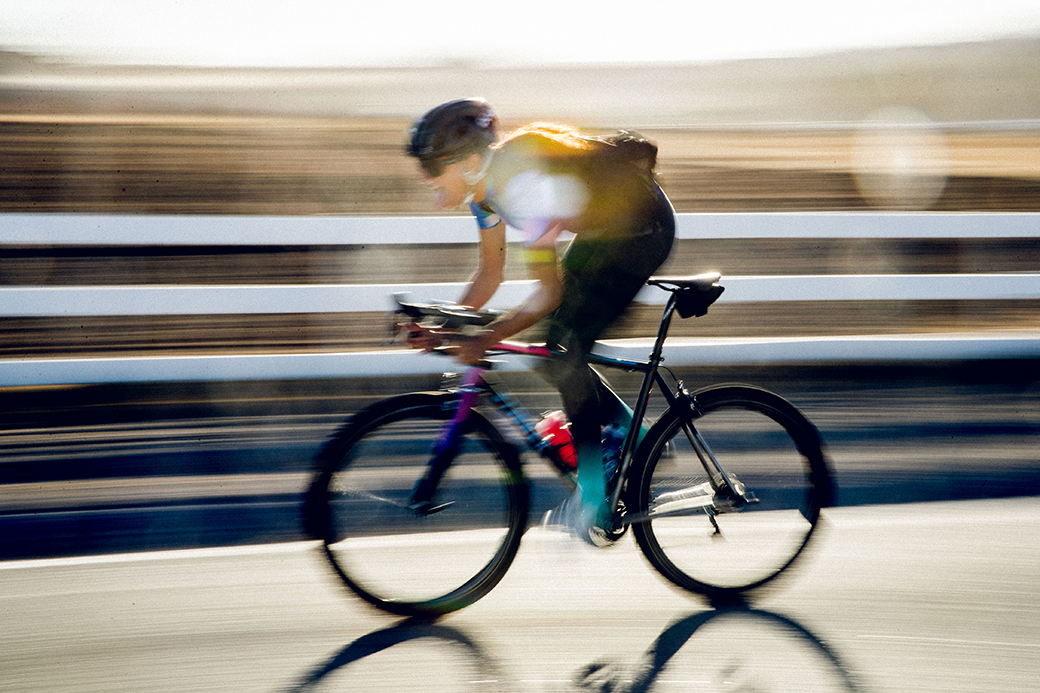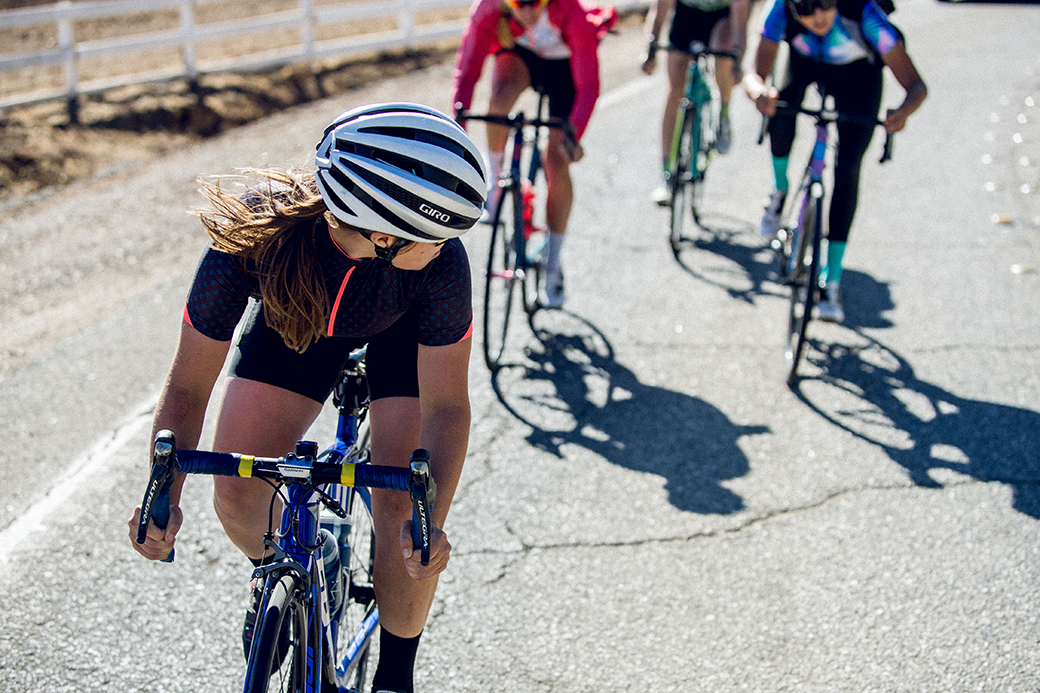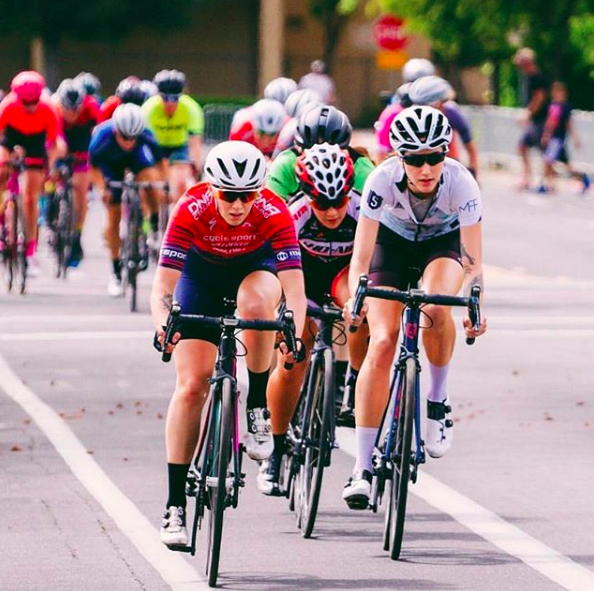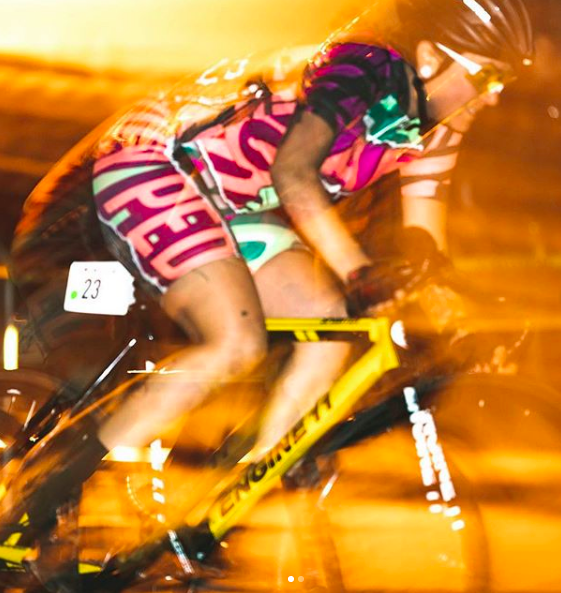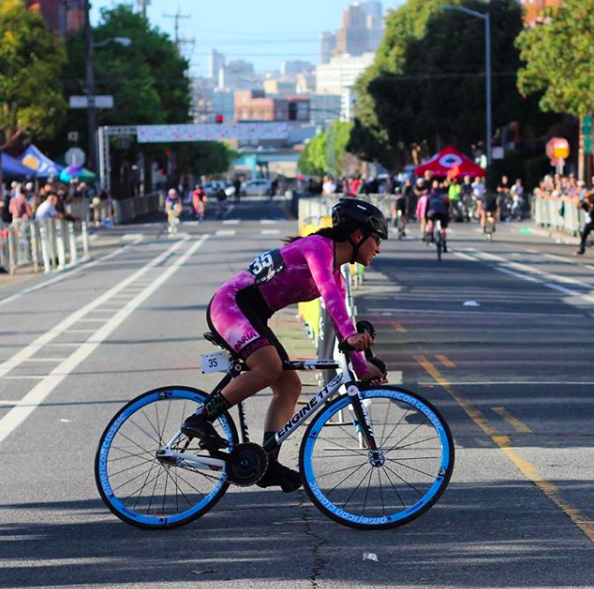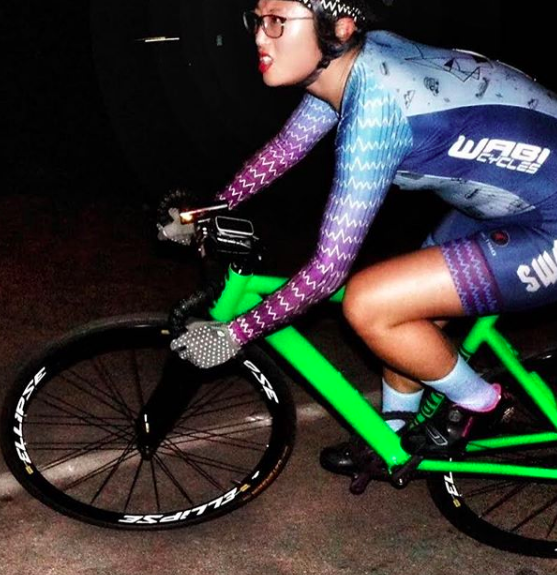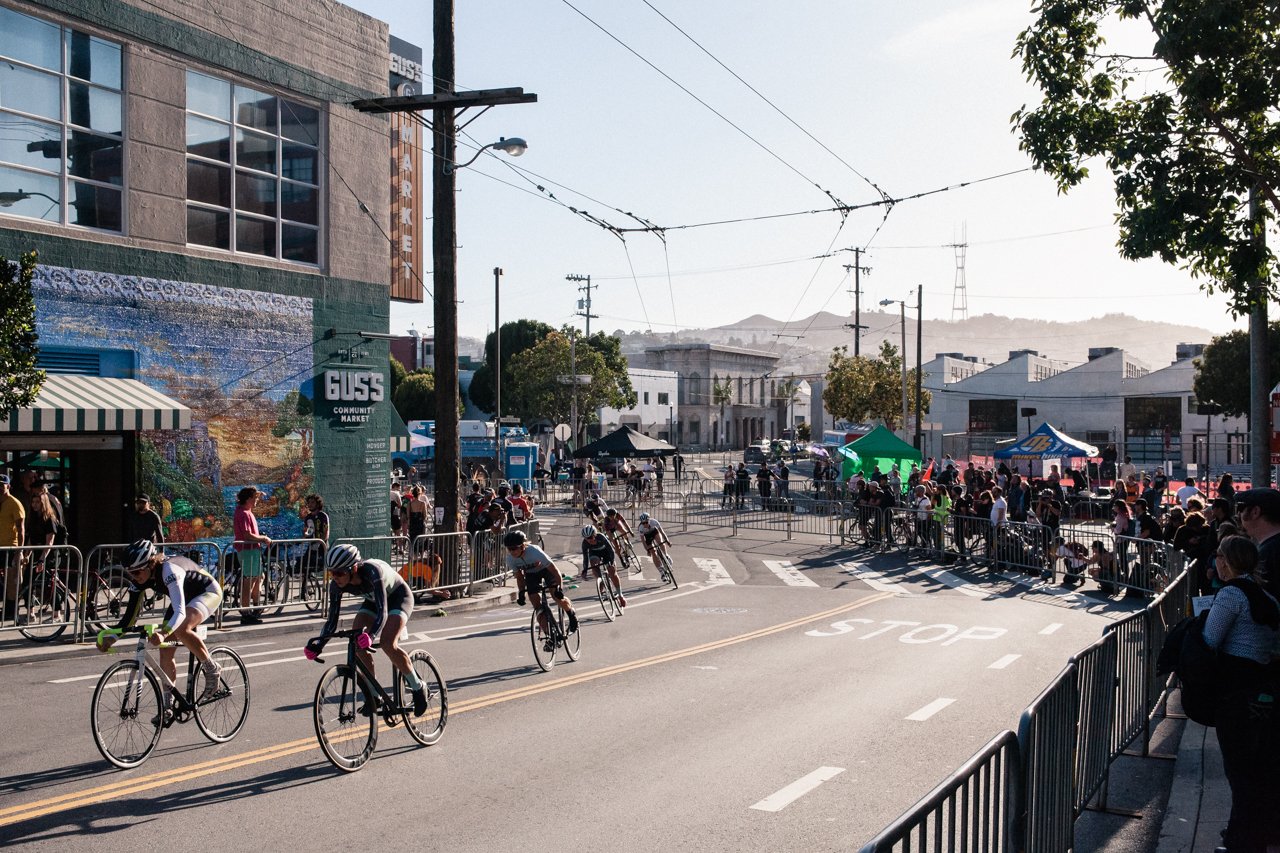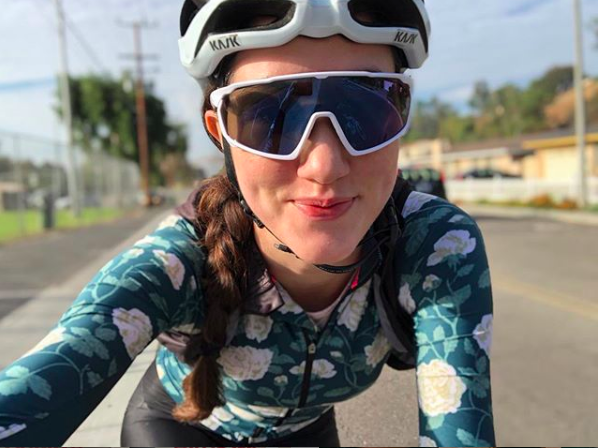Ginger Boyd: Racing For All Women
I recently chatted with former Cx teammate and LA based Cat 2 road & fixed gear racer, Ginger Boyd, about the very common struggle that women’s license holders face: finding races that make space for us, while simultaneously shouldering the burden of ensuring participation. Ginger has been an integral part of the powerhouse Machines for Freedom brand since its inception, due in large part, to her writing, marketing, and art direction expertise. Here are her words on the burden of “Racing for All Women.”
Courtesy of Machines For Freedom
It’s that time of year again, y’all. Time when the frantic Facebook posts and messages start swirling – “PLEASE COME RACE THIS RACE OR THERE WON’T BE A WOMEN’S FIELD NEXT YEAR.”
With this piece only halfway written, I got tagged in a Facebook convo. Great news, another local race has eliminated the pro women’s field this year. I’ve raced this particular event 4 years in a row. When a friend asks why there is no Pro/1/2 Women’s categories, the organizer is quick to comment back: “We're supporting the categories and age groups that have supported our race in the past. We've had as few as 2 women register in the Elite Women field in the past! On the other hand, the Women 3/4 race has always had a reasonable turnout.”
There it is. That threat we constantly hear: “Show up or we’ll take your field away.” This time it’s come true.
Even when it’s not so aggressive, it’s worse; it’s passive aggressive. Just a few weeks back, discussing a clinic with a promoter, I heard another common refrain: “You know, I put the women’s fields on out of the goodness of my heart. This isn’t a money maker for me. I just care about women racers.” Don’t worry, I managed to keep my eyes from rolling out of their sockets.
At the risk of sounding trite, this just isn’t fair. It isn’t fair to put the entire wellbeing of all women racers ever onto my shoulders. I am one racer and I am forever teetering along the line of balancing a full time job, a relationship, family, my budget, and maybe a social life (?). Oh yeah, and trying to race at the Pro/1/2 level. Sometimes, a single race doesn’t fit into that carefully planned, going-to-topple-at-any-moment, schedule. Sometimes, I just don’t want to. Sometimes, I need a fucking break.
“Sometimes, a single race doesn’t fit into that carefully planned, going-to-topple-at-any-moment, schedule. Sometimes, I just don’t want to. Sometimes, I need a fucking break. ”
And yet in the back of my mind, behind all of the other needs and responsibilities clamoring for attention, is that ever-present knowledge: if I don’t show up, maybe those racing won’t qualify for USAC points. If I don’t show up, maybe the organizers will never host another women’s field again. If… if… if…
And so we race. We race at inopportune times, for little or no prizes; we race “Open” fields that pit Cat 1’s against Cat 5’s; and we race “staggered fields,” in which a beginner field and a pro field are on the course at the same time.
Just last year, one of my closest friends, and a true Cat 2 Crit Queen, was taken out when our Pro/1/2/3 field lapped the 4/5 field in the last lap of a 6-corner technical crit. Those 4/5 racers simply didn’t know what to do. They can’t be blamed - no one told them to move right and yield to the pro peloton barreling towards them leading up to the sprint. And what happened? A crash. Big surprise. That Crit Queen is still suffering concussion effects, more than 6 months later, and her 2019 racing season plans are on hold.
So yes, we want equal prize money and we want equal time slots and we want all of those things, but before any of that, we want the freedom to simply choose whether to show up. I want to plan my race schedule without being threatened that without my individual presence, the field will disappear. A push towards equality also means allowing women to be as carefree, as selfish, and as discerning as male racers. Free to take a rest weekend. To not race if we don’t want to. To not be responsible for the wellbeing of all women racers everywhere.
I took a very informal poll of my male racer friends and asked if they had ever felt pressure to race based on some responsibility to future generations or other racers. They looked confused. “Do you ever feel some sort of responsibility to race, even if you don’t want to, just to make sure the promoters don’t remove the field completely?” Unsurprisingly the answer was a resounding no. It seems racers in the men’s fields (ALL the men’s fields, because there are SO many), have this freedom - just show up when and where they want, knowing that their particular presence or participation holds importance only to them and their own results. There is no organizer looking disappointingly at them as they sign their waivers, asking why they didn’t bring more teammates.
“There is no organizer looking disappointingly at [men] as they sign their waivers, asking why they didn’t bring more teammates.”
They are allowed to be selfish. They are allowed to spend energy in the days leading up to the race preparing mentally for the challenges, instead of posting pleadingly on Facebook, tagging every woman you’ve ever met who rides bikes to please, please, please show up on Sunday so they don’t cancel us.
It’s not always this way, though. Last year I raced a field of 38 women, on brakeless track bikes through the streets of San Francisco, at night, in one of the most spectacular women’s fields I’ve ever been a part of. Mission Crit is a goddamn miracle. And there was no pressure, no pleading, no threats made that the field would ever be taken away, or receive any less prize money than the men’s. It’s especially impressive, too, when you consider the details.
This crit is like a road crit on steroids, taking brakes out of the equation for an experience many would classify as LESS safe than a road crit. Safety is an issue almost always called out when discussing the lack of participation in women’s bike racing. And yet here we were, riding brakeless through the dark, taking hairpin turns at speed, and throwing ‘bows to hold position. If bike racing is too dangerous for women, why did all these racers come out?
People also say women’s bike racing has low participation due to the lack of beginner friendly fields. Ok, sure. It’s discouraging to be lumped in with elite and professional riders and get your ass handed to you. I don’t disagree with that. But again, here we were, with first-time racers lining up against seasoned riders, against ones who travel the world racing just this discipline, and still totally stoked to be there. So, were these racers somehow just braver than the rest of the world? More comfortable with failure? In the last lap, there were 9 of us left. Every other rider had been lapped. And yet, after the race, no one seemed particularly bummed about it. Everyone I spoke to couldn’t wait until next year. On top of all that, let’s consider the bikes. Fixed gear criteriums are raced on track bikes: fixed gear bikes designed to be ridden on a velodrome. Track racing is already a niche sport within the niche sport of cycling, and yet here we are, riding them on the streets on technical courses they aren’t made for. This is niche within niche within niche, and yet, this race has some of the largest numbers I’ve seen.
So, how did we get here? Is Mission Crit a miracle? Stay with me here, because this might sound crazy. But Mission Crit organizers James Grady and Clare Prowse have never once threatened to remove the women’s field entirely. *Race Organizers gasp in horror* In fact, from the very first year that they offered a separate women’s field, they have supported it without question. In 2015, that first year, they had 7 riders. And yet, they still offered equal prize money.
Mission Crit co-organizer Clare Prowse says:
There wasn't a discussion around equal prize money, or around treating the women's field as equally important to the men’s. It was just a given. Though we had equal prizes from the start, it was at Mission Crit 4 that we really started making a vocal push to recruit more women. Registration in the women’s field had almost doubled organically year over year up until that point, but with the numbers up to over 20 for Mission Crit 4 we thought an extra push would be needed if we wanted to continue that trend, so we began offering entry to the women’s field at a reduced rate. We’re presently outpacing RHC in terms of registrants in the women’s field - RHC BK5 saw 32 women line up while Mission Crit 5 had 50 women registered.
Mission Crit has also promised that once the women’s field reaches capacity (which at this rate, they are bound to do sooner rather than later), each year the women’s and men’s fields will alternate with top billing and the 9 pm start time of the main race.
So when a race organizer of a road crit responds to racers in the women’s fields with threats, condescension, and a “you’re lucky we’re even giving you a chance to race” attitude, it’s no surprise that we are frustrated. It doesn’t have to be this way. When treated with respect, women show up. Even if it’s a new discipline for them, one perceived as dangerous, and even if they are set to race against semi-professional, world-travelled racers. Suddenly ,every explanation given for lackluster women’s participation deflates like a balloon, and the onus is shifted not onto each racer, pressured to show up for the good of the field, but to the organizers who treat us as afterthoughts at best, or at worst, a waste of their time.
Mission Crit founder, James Grady, thinks it’s rather simple:
I believe women are the future of cycling; there is so much potential and room for growth. We've only just started to see what it looks like when women are given the same opportunities, support, and exposure as men. I feel very strongly that everyone deserves a chance to prove themselves. Clare and I are just putting on a bike race, but we're determined to use the voice we've been given to do whatever we can to help lift people up. Because at the end of the day - on or off the bike - we're all just people who want to be treated with kindness and respect.
Looking at some of the work Ayesha McGowan has done to move forward representation of athletes of color in the cycling world, she constantly references the importance of equity over equality. Ayesha writes that equity is the solution to the problem of inequality; “Equality is not possible right now because not everyone is starting from the same place. The industry has represented one type of cyclist for so long, that it’s got some catching up to do.” She means that if the cycling industry has primarily leaned on images of cis-white-male cyclists, it’s not enough to simply add 1 person of color into the mix. They need to lean into the gap, into what’s missing, and put a heavier emphasis into representing athletes of color. Once the scale has been tipped, perhaps then equality can be the goal.
“Equality is not possible right now because not everyone is starting from the same place. The industry has represented one type of cyclist for so long, that it’s got some catching up to do.”
Applied to racing, it means that it’s not enough to equal our prize money. Especially if that equal prize money comes with a caveat that the field has to reach a certain number of participants. That is one of my favorite examples of going through the motions of equality without actually doing anything to help women; chances are, organizers know that field minimum will not be reached and thus the “equal” prize money will never be a reality.
Another race that’s made a shift towards equity for women by shifting the race completely towards athletes in the women’s field, is the 2019 Colorado Classic. Rather than run a women’s race with less prize money, shorter distances, and less stages than the men’s, they’ve eliminated the men’s race altogether and used all their resources to create a top-tier race for women license holders only.
I know that my local race organizer won’t eliminate all of his men’s fields because I understand that in order to function, bike racing must be run as a business, and those fields are the moneymakers. In fact, I wouldn’t want them to because men’s racing is a great thing also and it shouldn’t always be eliminated. What I ask is to be treated as an equal. One with the freedom to choose which race to attend based on my fitness, my season schedule, and yes, even my mood. I ask to be treated as a paying customer, who over the course of the past 2 seasons has spent over $2,000 on race fees alone. Does my financial investment not grant me the same allowances as a racer in the men’s field? Is my money less green, making it totally acceptable to block my access to the sport I love?
Finally, if it’s simply too much to ask for a local race organizer to act on their own volition and treat a Cat 2 women’s racer the same as they treat a Cat 5 men’s racer, then I believe the push should come from USA Cycling. Any race with a USAC affiliation should be required to offer a women’s race for all categories. Moneymaker or not.
If you build it, they will come. If you treat us with respect, we will come in droves.

